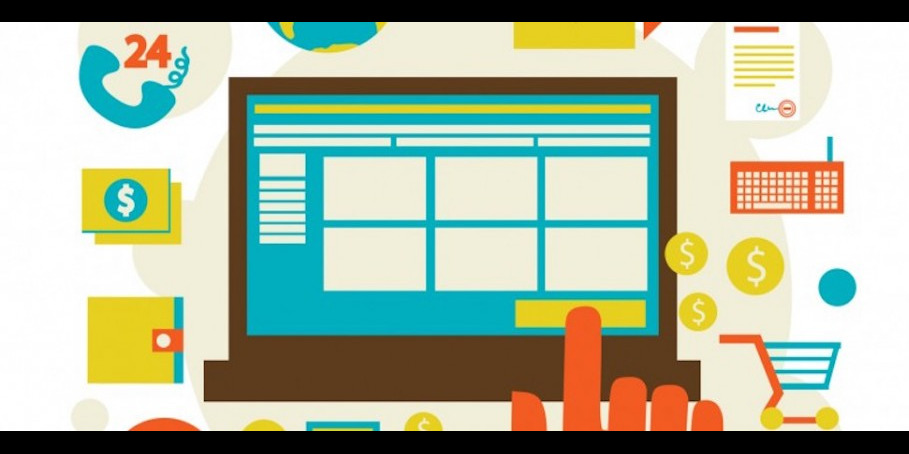

What makes user-experience the mainstay of online marketing?

undefined
The consumer has always been at the center of the selling process, whether you are offering products or services, online or offline. The focus, therefore, is not only on showcasing the product or service but on crafting an experience for the buyers. This mindset becomes all the more important if you are selling on the internet as a majority of online customers are not only smart and tech-savvy but also time-starved. This means that your online presence needs to be exceptional enough to hold their attention and compel them to convert. This is where the concept of User Experience steps in as most businesses realize that it is as significant as the product or service they provide. There are thousands of sellers promoting similar products and services online but UX is one factor that can be the brand differentiator to set them apart from the rest.
Understanding user experience and its key elements
User Experience or UX of a website emerges as one of the most critical parameters for online success as it works on making the website visually appealing and user-friendly. It refers to the ease with which a user can find, access, review and buy the products or services that are being offered by a business. Seeing all that a website's UX is capable of, it becomes clear that it is not a single entity but a combination of elements, each of which serves a specific purpose.
UI Design: The user interface is the key element of UX as it is the single most effective means to capture the visitor's attention.
Value: The UX needs to replicate the value that the product or service will be serving the consumer.
Navigation: It should enable the visitor to navigate the site and search the desired products with minimal clicks.
Functionality: The entire functionalities that are needed for a complete shopping journey should be present and clearly visible.
Usability: The site should be user-friendly to an extent that even the smallest requirement is fulfilled effortlessly.
Responsiveness: It is vital for the site to deliver consistent experiences irrespective of the device being used to access it.
The recipe of a successful UX design is the perfect combination of these elements as it materializes the intention of not only fulfilling but surpassing customer expectations. Great designs are meant to be seamless as they merge the user's needs and expectations with new trends, changing product and business environments, technical limitations and possibilities, and scalability to deliver the highest level of customer satisfaction as they leave your website after closing the transaction.
What makes UX critical for online success?
Making an effective impact on online shoppers is far more challenging for businesses than it appears. The reason is that they do not have a tangible product to influence the purchase decision; it completely depends on what the users see on the website and the kind of experience they get during the buying journey. No wonder, UX is regarded as one of the most critical aspects of online success. In fact, a majority of shoppers tend to discard one site and move to the next if the former fails to live up to their expectations, both in terms of the product offered and the user experience delivered by it. Here are some ways in which UX has a far-reaching impact on the success of an online business:
The Potential to Elevate The Sales
With online shopping, the shopping experience is amongst the first criteria that influence the buying decision of a prospective buyer. Conversion involves a smooth and seamless journey from the first access to the completion of the transaction. Therefore, it can be concluded that a well-executed UX has a huge potential to elevate the sales for a business.
The Ability to Decrease the Bounce Rate
Undoubtedly, a high-end UX design is capable of decreasing the bounce rate of a website. This is one of the biggest challenges for sellers as a high bounce rate indicates incomplete user journey, which is chiefly associated with one or more glitches in the user experience. For instance, the design elements may not be intuitively placed, the page loading speeds may be poor or there may be some other issues. Overall, even a minor hitch can make the user leave and never come back again.
The Aptitude to Drive Loyalty
The objective of an e-commerce website is not only to engage the users and convert them once but to build loyalty for their brand. Loyalty is like a long-term earning for a business that is formed as a result of positive and consistent brand-customer interactions over a period of time. A great UX is capable of driving customer loyalty by converting them once and bringing them back again and again.
UX should be the priority for businesses
Considering the impact that UX can have on the survival and success of an online business, it is one aspect that should get all the attention it deserves. Even though the business may need to invest a good deal of time and money to come up with an exceptional one, this is one investment that is likely to yield excellent benefits in the long run. As personalization becomes the right approach to online marketing, the UX design is to be ideated on the basis of extensive research of the user demographics, preferences, expectations, and needs. With this mindset, the business can design and develop a site that is based on data rather than assumptions. Such a solid foundation opens up new opportunities to reach the users with a targeted approach and maximize the chances of conversion.






